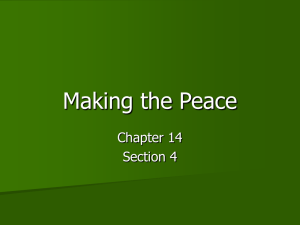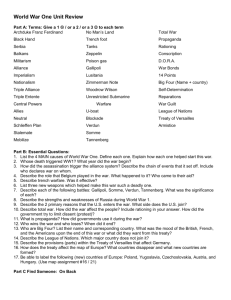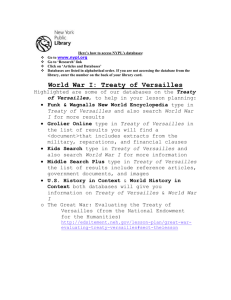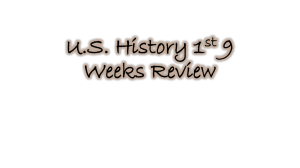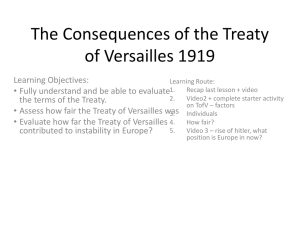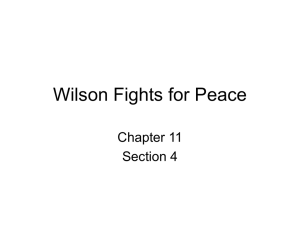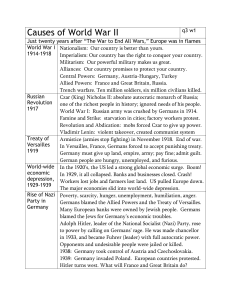Markscheme.doc - lucyibhistory
advertisement
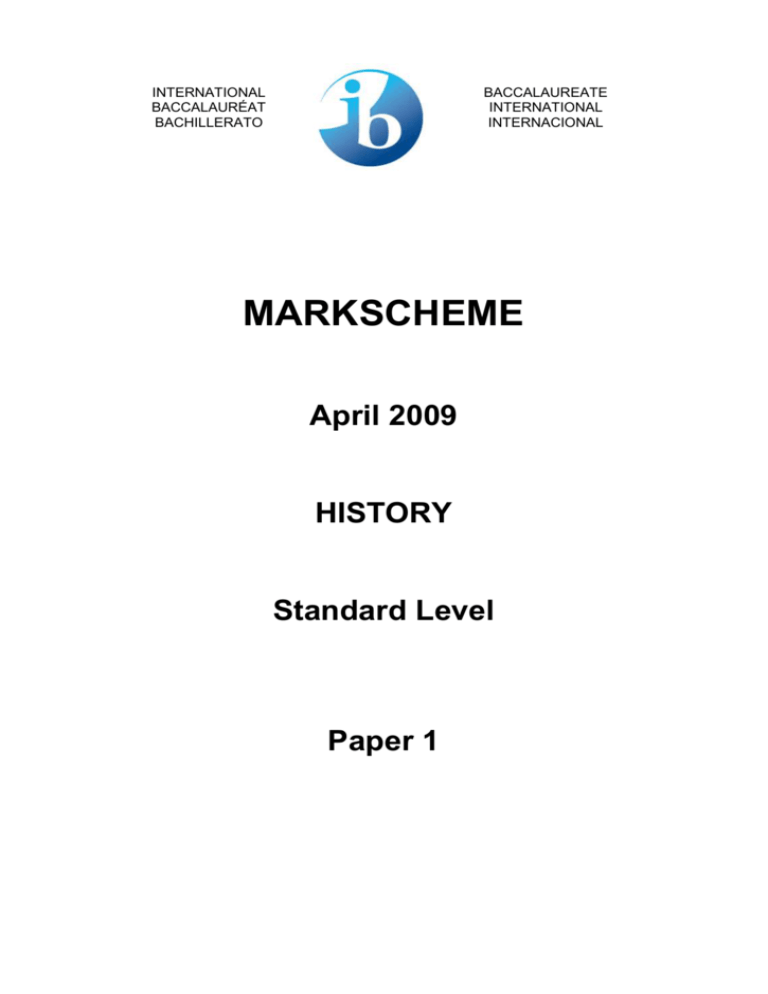
INTERNATIONAL BACCALAURÉAT BACHILLERATO BACCALAUREATE INTERNATIONAL INTERNACIONAL MARKSCHEME April 2009 HISTORY Standard Level Paper 1 Section A Subject: The Terms of the Treaty of Versailles 1. a) Why according to Source A, were the terms of the Treaty of Versailles viewed as ‘Diktat” by the people of Germany? The reasons given in Source A are Territorial losses, Reparations, Secrecy, Colonial losses, Article 231 and Demilitarisation. All of these resulted in the anger and public outcry against the Treaty of Versailles. Award [1 mark] for simple comprehension, and the other [2 marks] for explanations of at least 2 of the terms. The terms of the treaty of Versailles can be viewed as diktat by the Germans as the reparations damaged the economy of German for years to ocme, the Article 231 (War Guilt clause) publicly humiliated them and made Germany the enemy of all those damaged by the war. Also the great territorial losses in which Germany lost 13% of its total land, all of her colonies and 7 million of its population was incredibly harsh. Along with this the secrecy is which the treaty was signed created even greater uproar in Germany and the obvious threat of invasion that demilitarisation brought upon Germany was incredibly daunting for its population. b) What message is conveyed in Source B? Award [1 mark] for a simple explanation referring to one of the following: The German Government were going to sign the treaty But did not want to take responsibility of WW1 And did not want to deliver the war criminals to the Allies Award [2 marks] for two of the above or for more sophisticated comment, note the anger of the German’s and their reluctance to not sign these two agreements and sign the reparations and territorial losses etc. 2. Compare and contrast the views on the Treaty of Versailles expressed in Sources C and E. For comparison: Both sources are from the period of time that the treaty occurred and therefore portrayed the primary reactions and actions towards the Treaty of Versailles Source E calls for a harsh punishment of Germany and source C is clearly depicting this. Both sources portray the cruel treatment of Germany and Germany’s inability to change the outcome of the Treaty For Contrast: Source E is portrayed as though the Treaty is a necessity and justice must be harsh upon the German and totally defensible and adequate Source C is portrayed as though the Treaty was unfair and unbearable for the Germans who were rebuilding their economy and working class. Source E is more formal and a speech addressed to masses therefore using resounding language to emphasise the point of the argument Source C is a cartoon with no discussion on relevant events, just a drawing open for interpretation Source E is before the actual implementation of the Treaty of Versailles Source C is directly after the Treaty was put into place and is epitomising the extreme view against the Treaty. If only one document is addressed, award a maximum of [2 marks]. Brief descriptions of both sources will be worth around [3 marks] if the comparative element is only implicit, and [4 marks] with explicit linkage. If the linkage is excellent or there is detailed material in a comparative framework [5 or 6 marks] could be scored. 3. With reference to their origin and purpose, assess the value and limitations for historians studying the harshness of the terms of the Treaty of Versailles, of Sources D and A The origin of Source D is that it is an Article from the Treaty of Versailles. It is Article 231, Germany accepting responsibility for WW1. The purpose of the article is to outline exactly the terms of the guilt clause. The value of the source is that it is an extract from the original document and therefore its authenticity is guaranteed. The limitations of the source are that there is no German viewpoint is included and does not state factual evidence of Germany’s complete responsibility. The origin of Source A is that it is an extract from a Historical Textbook called Essential Modern World History first published in 2001 by Nelson Thornes LTD. Its purpose is to inform readers about the terms of the Treaty of Versailles. Utilizes multiple sources and as it is published in 2001 the historians would have used access to archives of information and therefore higher chance of accuracy. However its publication date is also a limitation as opinions may have been distorted over time. Also as a western publication the structure and text may be bias. The political stance of the author is not stated and this could also make the text subjective. Ideally each source will be marked out of [3 marks] but if only one source is addressed then mark out of [4 marks]. For a maximum mark of [6 marks] student must refer - with relevant points - to the origin, purpose, value and limitation for both sources. 4. Using these sources and your own knowledge express to what extent you agree with the verdict on the Treaty of Versailles expressed in Source A as “dictated peace”. Source A lists the terms of the Treaty of Versailles and highlights the harsh, deceitful and merciless way in which the Germans were dealt with after WW1. Source B shows a weak resistance to some of the more embarrassing terms of the Treaty of Versailles and highlights how the Germans were horrified and feelin oppressed by the Treaty Source C depicts the common feeling of Germans after the Treaty of Versailles. A cruelty imposed upon them that burdened and ‘dictated’ their lives. Source D record the terms of Article 231 the Guilt Clause. The humiliation of accepting responsibility for the greatest war in history to date and the deaths of millions was the most deterring term of the Treaty for the Germans. Source E describes the French view on the way in which Germany should be dealt with. It calls for justice to the dead; furthermore it suggests that the Treaty would be relentless on German society. Own knowledge could include statistics and further evidence and details of the Treaty of Versailles being harsh on the population of Germany. It could be discussed in relation to events in the war or following the implementation of the Treaty of Versailles. If only source material or only own knowledge is used, the maximum mark that can be obtained by the candidate is [5 marks]. To obtain full marks, there must be an assessment and the source material should be referenced. For [8 marks] expect arguments, synthesis of documentary material and own knowledge, and the sources referenced.
